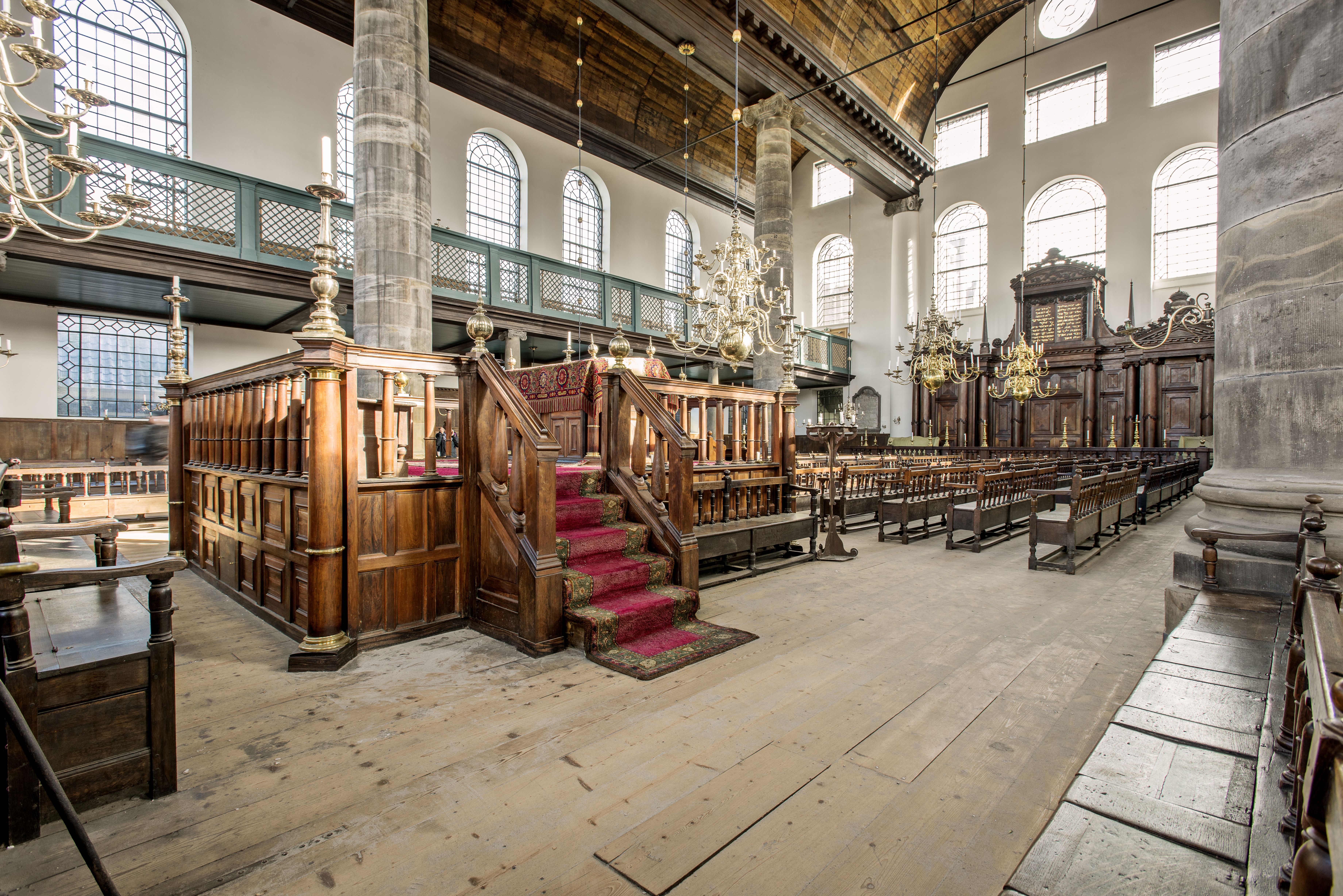The Portuguese community holds its age-old traditions and customs dear. Those traditions and customs concern the way we dress, the order of our service, customs surrounding the service, the way we treat each other, and even our values.
Layout
The Esnoga is set up in a distinct way. The Hazan leads the service from the teba, which is placed near the entrance and opposite the Holy Ark (hechal). The teba is surrounded by a balustrade. Its copper knobs are used to hold the Tora mantles.
During the High Holidays the so-called hatanim sofas are placed in front of the Hechal. During Simchat Torah the sofas are used to seat the Hatan Tora and Hatan Beresit.
Nothing changes in the Esnoga. Sand still covers the floor to soften the sound of footsteps, there is no central heating and the synagogue is lit by the copper chandeliers’ hundreds of candles.
Chazzanut
The specific Spanish/Portuguese tradition is taken from Oeb Brandon’s Seder Hazanut from 1892. In the 1940s Hazan Bram Lopes Cardozo annotated his own personal copy in New York. Hazan S. Nunes Nabarro recorded all services in the 1960s and two DVDs have been produced of those recordings.
Would you like to learn more about our traditions and chazzanut? Click here.
Traditional clothing
Up until the 1980s officiantes (such as the rabbi and Hazan) wore a special costume, consisting of knee breeches, a jabot and three-cornered hat. Nowadays, they wear top hats. The tokeang (the shofar blower) still wears a three-cornered hat on Rosh Hashana.
Parnassim wear a high hat to synagogue. Up until the 1980s they wore tails on Kal Nidre and Simhat Torah and a morning coat on holidays. Officiantes and misvoteiros used to wear a high hat on holidays, as did some snogeiros.
Portuguese manners
The Portuguese used to display a type of behavior that can best be described as gravidade. Portuguese don’t walk, they stride. They will not display exuberant or common behavior. A number of customs are still alive and well in our synagogue: to walk in procession, bowing to each other and wishing someone Hazak Baruch with a wave of a hand.
The atmosphere in our synagogue is in part determined by the speed of reading. Sefardim read slowly. In the past it was even considered elongated. Snogeiros do not monitor each other’s behavior and are respectful of each other’s private life. This is conducive to our open and tolerant approach of which we are proud. Whether orthodox or liberal, every Jew is welcome and can play a part in our community.

